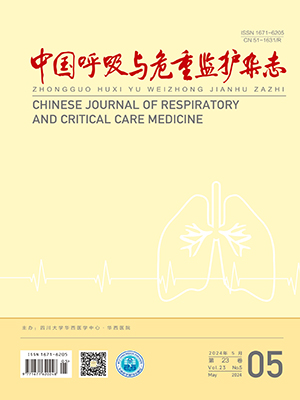| 1. |
Walsh TJ,Anaissie EJ,Denning DW,et al.Treatment of aspergillosis: clinical practice guidelines of the Infectious Diseases Society of America.Clin Infect Dis, 2008,46:327-360.
|
| 2. |
Wiederhold NP,Lewis RE.The echinocandin antifungals: an overview of the pharmacology,spectrum and clinical efficacy.Expert Opin Investig Drugs,2003,12:1313-1333.
|
| 3. |
Rodriquez-Tudela J,Donnelly J,Arendrup M,et al.EUCAST Technical Note on the method for the determination of broth dilution minimum inhibitory concentrations of antifungal agents for conidia-forming moulds.Clin Microbiol Infect,2008,14:982-984.
|
| 4. |
Pfaller MA,Duncanson F,Messer SA,et al.In vitro activity of a novel broad-spectrum antifungal,E1210,tested against Aspergillus spp.determined by CLSI and EUCAST broth microdilution methods.Antimicrob Agents Chemother, 2011,55:5155-5158.
|
| 5. |
Pfaller M,Castanheira M,Diekema D,et al.Comparison of European Committee on Antimicrobial Susceptibility Testing (EUCAST) and Etest methods with the CLSI broth microdilution method for echinocandin susceptibility testing of Candida species.J Clin microbiol, 2010,48:1592-1599.
|
| 6. |
Planche V,Ducroz S,Alanio A,et al.In Vitro Combination of Anidulafungin and Voriconazole against Intrinsically Azole-Susceptible and-Resistant Aspergillus spp. Antimicrob Agents Chemother, 2012,56:4500-4503.
|
| 7. |
Testing ECoAS.Itraconazole and Aspergillus spp: Rationale for the clinical breakpoints.In: http://www.eucast.org; 2012.
|
| 8. |
Shalit I,Shadkchan Y,Samra Z,et al.In vitro synergy of caspofungin and itraconazole against Aspergillus spp.: MIC versus minimal effective concentration end points. Antimicrob Agents Chemother, 2003,47:1416-1418.
|
| 9. |
Perea S,Gonzalez G,Fothergill AW,et al.In vitro interaction of caspofungin acetate with voriconazole against clinical isolates of Aspergillus spp. Antimicrob Agents Chemother, 2002,46:3039-3041.
|
| 10. |
Perkhofer S,Jost D,Dierich MP,et al.Susceptibility testing of anidulafungin and voriconazole alone and in combination against conidia and hyphae of Aspergillus spp.under hypoxic conditions. Antimicrob Agents Chemother, 2008,52:1873-1875.
|
| 11. |
Heyn K,Tredup A,Salvenmoser S,et al.Effect of voriconazole combined with micafungin against Candida,Aspergillus,and Scedosporium spp.and Fusarium solani.Antimicrob Agents Chemother, 2005,49:5157-5159.
|
| 12. |
Cuenca-Estrella M,Gomez-Lopez A,Garcia-Effron G,et al.Combined activity in vitro of caspofungin,amphotericin B,and azole agents against itraconazole-resistant clinical isolates of Aspergillus fumigatus. Antimicrob Agents Chemother, 2005,49:1232-1235.
|
| 13. |
Krishnan-Natesan S,Wu W,Chandrasekar P.In vitro efficacy of the combination of voriconazole and anidulafungin against voriconazole-resistant cyp51A mutants of Aspergillus fumigatus.Diagn Microbiol Infect Disease,2012,73:135.
|




